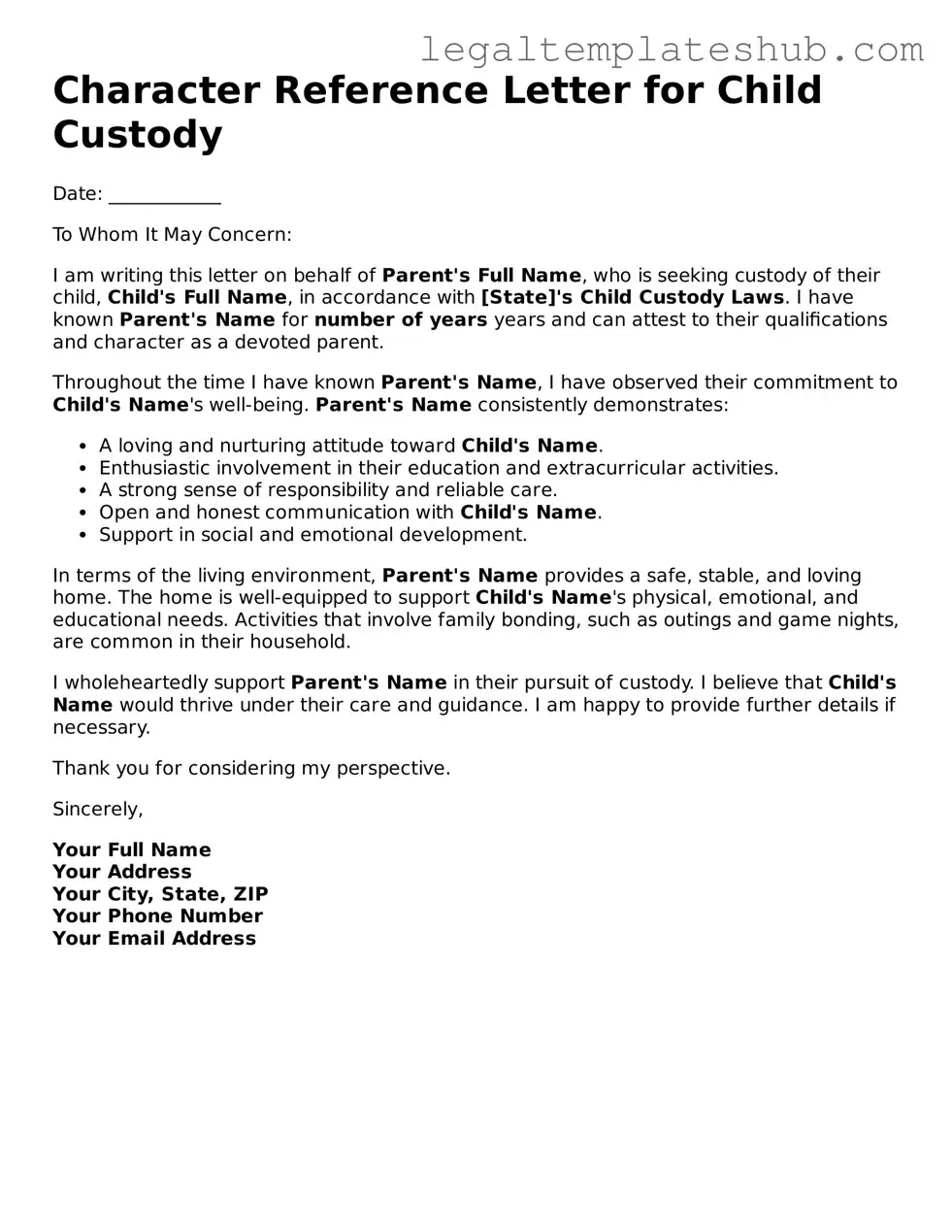Printable Character Reference Letter for Child Custody Template
The Character Reference Letter for Child Custody form serves as a vital tool in custody proceedings, providing insight into a parent's character and suitability for child-rearing. This letter, often written by friends, family, or community members, can significantly influence the court's decision regarding custody arrangements. To ensure your voice is heard, consider filling out the form by clicking the button below.
Access Editor
